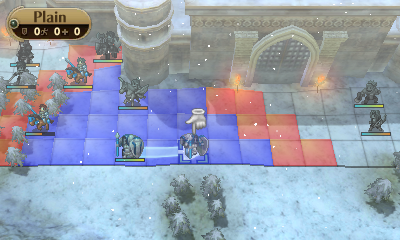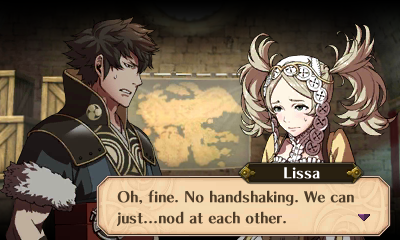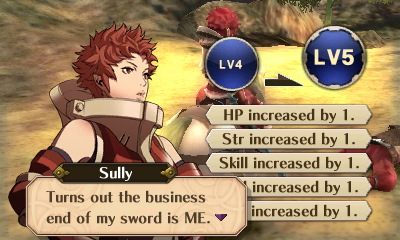Fire Emblem: Awakening Review (3DS)
Fire Emblem: Awakening marks a new direction for the Fire Emblem series. Nintendo have made many changes and additions to the franchise’s usual formula, improving an already great series while simultaneously allowing it to appeal to both old and new audiences .
The main change comes from the ability to choose either classic or casual modes, determining whether characters are permanently lost when defeated in battle or not. Paired with different difficulty settings, Awakening can either be an easier entry to newcomers, or a punishing campaign for veterans.
Casual mode is a godsend for those that hated losing characters during battles in previous Fire Emblem entries. While I decided to stick to classic for the added challenge, casual definitely removes the frustration and many resets caused by character loss, and as with the rest of the series, you’ll definitely want everyone to survive.
Awakening takes place in the country of Ylisse, home to the titular Fire Emblem. During the story, you follow Prince Chrom and his ‘shepherds’, who are joined by your customisable character, an amnesiac turned tactician. While Awakening’s story is similar to previous entries in the Fire Emblem series, it’s still fairly interesting and there are enough twists to keep you going until the end.
Even though the story may not be too unique, it’s the characters that are at the heart of Awakening. Each one has different personalities and quirks that make every one of the cast interesting. You will most likely end up with your own favourites, which is why casual mode is a nice addition to the game.
Battles have been left mostly untouched, but there have been some changes which allow for more interaction between characters. As with previous games, skirmishes take place on different maps, with the objective generally being to defeat all enemies or a powerful boss. The game’s different units all have strength and weaknesses which must be taken into account when selecting them for battle. The traditional weapon triangle is also present, with swords beating axes, axes beating lances and lances beating words, adding another layer to battles. However, the trinity of magic has been removed, meaning that there is less strategy involved when choosing which magic tomes to use. Though this does make the game somewhat easier, it would have been nice if this system was left intact.
Another area in which Awakening diverges from previous installments is the ability to pair characters together. Doing so gives stat boosts to the character on point and allows them to team up for additional damage. While this does reduce the amount of experience the support character gains, it makes it easier to form relationships with the paired units.
As characters bond with each other during battles, their support rank increases, leading to some amazing dialogue and even marriage if their rank is high enough. Characters can also have children, who in turn can be recruited to your army. This leads to even more interactions between your characters and a bigger amount of units for you to play with.
Progression through Awakening is a lot more accommodating to players than previous Fire Emblems. Players can fight optional battles if they feel that they’re not strong enough to continue, and side missions help to break up the main story. These side missions are also more than just regular fights, with new stories to be told and fighters to recruit. Even though you can choose to skip these extra missions, doing so would mean missing out on some of the best content in the game.
Graphically, Fire Emblem: Awakening makes good use of the 3DS. There are three distinct styles used throughout the game: 2D character portraits during conversations, 3D maps with 2D sprites in skirmishes and full 3D when engaging an enemy. Each style looks great, with detailed character portraits and character models. Awakening’s use of 3D effects is also top notch, though the framerate can occasionally drop during battle when turned on. There’s also the game’s strange choice to have characters without feet, though you eventually end up getting used to it. The few CG cut scenes that are included are also a treat to the eyes, usually being reserved for the most interesting or important story scenes.
Awakening also has an amazing soundtrack, with each track sounding perfect for the situation it’s used in. Also of note is that the battle themes are usually more energetic versions of the map themes, which transition into each other perfect when you fight an enemy. While some songs may repeat more times than you may like, it’s never enough to truly get on your nerves. Both English and Japanese voices are included in Awakening, and each is well done. Though spoken lines may be sparse, each one is conveyed excellently.
Overall, Fire Emblem: Awakening is the perfect way to update a beloved series, improving accessibility while still keeping fans who have been with the series for a while happy. The fact that it’s on a handheld console means that you can quickly play through a skirmish or adjust your units whenever you have some spare time. With the addition of DLC maps which will most likely start rolling out after the game’s release, you will always have reason to keep playing one of the 3DS’ best games.
- Arcana Heart 3: Love Max!!!!! Reaches North America This Year - April 30, 2014
- BlazBlue coming to Europe… Next Week?! - April 17, 2014
- Blazblue: Chronophantasma Vita Release Dated For North America - April 14, 2014









